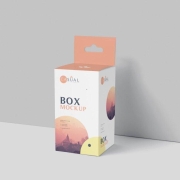14 běžných typů barevných krabic na papírové obaly
Pokud usilujete o výjimečný obalový design, nemůžete přehlédnout význam typů obalových krabic. Sestavili jsme pro vás seznam 14 běžných barevných typů papírových obalových krabic!
Na dnešním trhu je stále patrnější důraz na balení výrobků. Rozmanitost dostupných obalů je ohromující. Nejenže zvyšují kvalitu a atraktivitu výrobku, ale také zvyšují potěšení z jeho používání. Obalové krabice, které jsou stylové, pohodlné, jednoduché, ale zároveň elegantní, hrají zásadní roli při prodeji a rozvoji značky.
Pro designéry, kteří chtějí vytvářet obaly přitahující pozornost, je znalost několika klasických tvarů krabic nezbytná. Díky nesčetným typům a strukturám krabic, které jsou k dispozici, mohou designéři v rámci základního rámce inovovat, vytvářet dynamické tvary a propůjčovat obalům výrobků jedinečný styl.
Níže jsou uvedeny některé klasické typy obalových krabic:
- Obyčejný typ skříňky (reverzní zadlabací skříňka): Jedná se o velmi běžný typ krabice, na trhu je jich mnoho a konstrukční struktura je poměrně jednoduchá. Navzdory své jednoduché struktuře ji lze označit za původce papírových obalových krabic a nejoriginálnější typ krabice.
- Výhody: Snadná a levná výroba.
- Nevýhody: Nevýhody: Běžné, s nízkým pocitem jedinečnosti.
Díky kreativnímu designu však může i tato jednoduchá krabička na regálu vyniknout.

- Typ krytu letadla Box: Letadlové krabice se používají hlavně k balení zboží, které není příliš velké a snadno se přepravuje. Jejich rozložený tvar připomíná spíše letadlo, odtud jejich název. Po rozložení se z obalové krabice stane celistvý kus nasekaného papíru, který je integrován pomocí konstrukčního řešení. Krabici není třeba lepit, což může ušetřit náklady na zpracování.
-
- Výhoda: Vynikající odolnost proti tlaku a snadné skládání.
- Poznámka: Při tisku se vyhněte složitým vzorům kvůli nepřesným metodám tisku.

-
- Nebe a země Typ obalu: Podle tvaru "obalu" lze krabice na obaly nebes a země rozdělit na čtvercové krabice na obaly nebes a země, obdélníkové krabice na obaly nebes a země, kulaté krabice na obaly nebes a země, krabice na obaly nebes a země ve tvaru srdce a krabice na obaly nebes a země ve speciálním tvaru. Různé stropní a podlahové krycí boxy se používají v různých průmyslových odvětvích a mají širokou přizpůsobivost.
-
- Mohou být vytvářeny automaticky, což zvyšuje efektivitu a snižuje počet manuálních chyb.

-
- Typ výsuvného boxu: Box má tvar zásuvky a klasickou výsuvnou konstrukci. Skládá se z těla boxu a zásuvky, která se snadno vytahuje a zavírá. Je rozdělena na dvě části: víko a kování. Tělo krabice se také nazývá vnější krabice a má dvě podoby: jednostranné otevírání a oboustranné otevírání. Tato dvouvrstvá konstrukce ve tvaru boxu má také vlastnosti výsuvné formy, takže je pevná a snadno se používá.
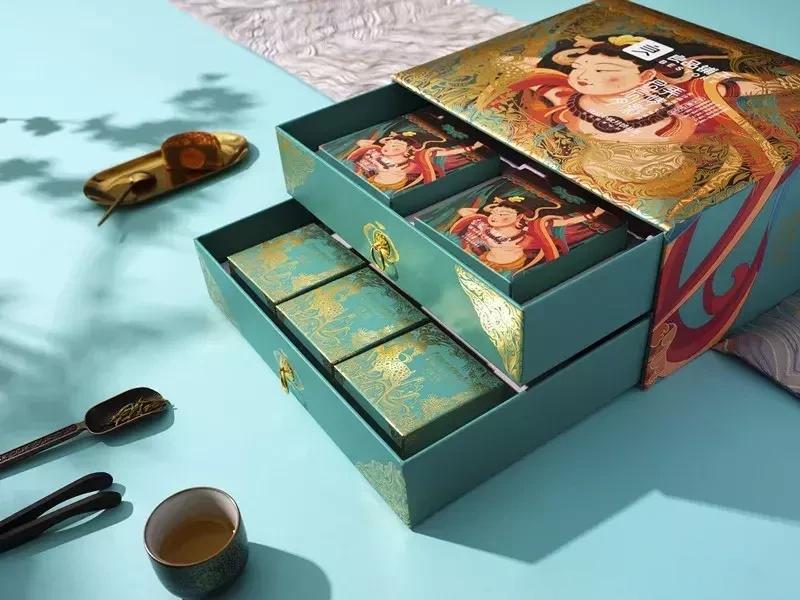
- Polygonální typ krabice: Tvar krabice se skládá z pětiúhelníků nebo šestiúhelníků nebo i více mnohoúhelníků. Celkový tvar je mnohem propracovanější než běžné tvary. Často se používá jako dárkové krabice, které lidem dodávají stabilní a atmosférický pocit a na spotřebitele zanechávají hluboký dojem.
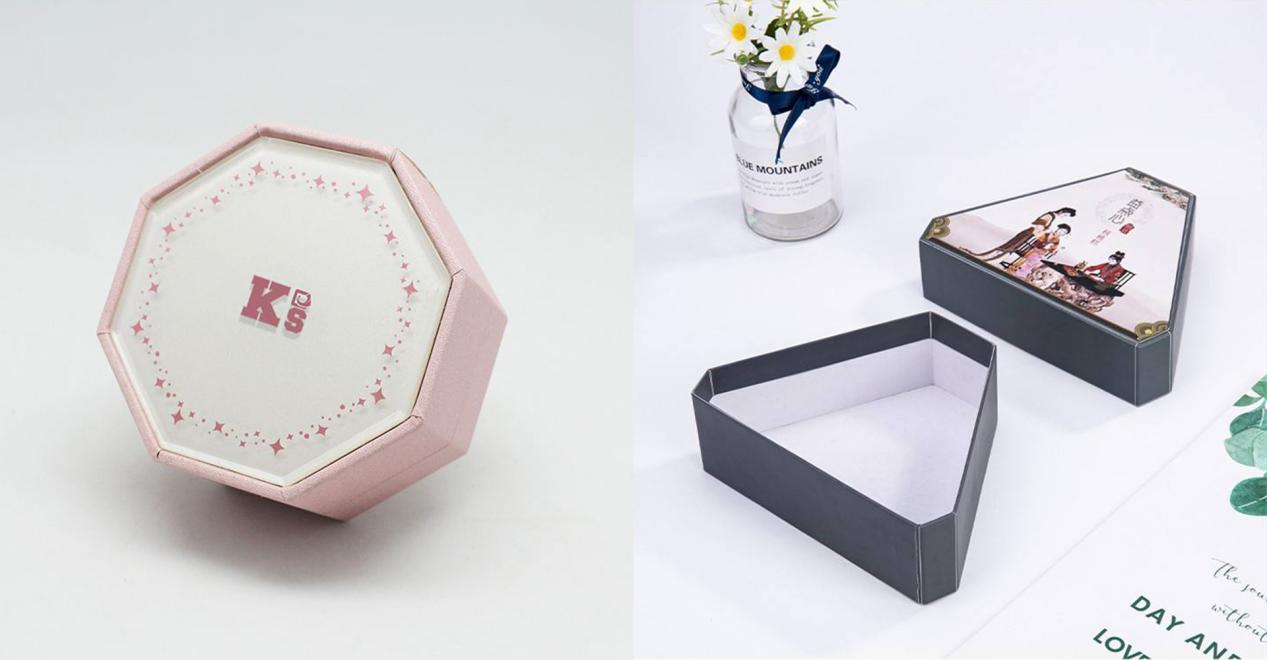
- Typ okenního boxu: Typ krabice s okénkem je karton s vyříznutými otvory a připevněnými okénky nebo průhledným celofánem, který usnadňuje průhlednost výrobku, což umožňuje intuitivní vystavení výrobku před námi, usnadňuje zákazníkům jeho pozorování, umožňuje spotřebitelům intuitivnější výběr výrobků a zvyšuje důvěryhodnost výrobku. stupeň a zlepšuje rozhodovací schopnost spotřebitelů při nákupu. Výrobky s krásným vzhledem mohou zdůraznit své přednosti a stát se konkurenceschopnějšími.
- Tip pro návrháře: Využijte okno pro kreativní asociativní návrhy.

- Tip pro návrháře: Využijte okno pro kreativní asociativní návrhy.
- Krabice speciálního tvaru: Těžiště speciálně tvarovaných boxů spočívá ve zvláštnosti konstrukce a atraktivním vzhledu. Proto jsou kreativní design a výrobní metody krabic speciálních tvarů náročnější než u jiných typů krabic. Design obalů krabic speciálního tvaru má však jedinečnou strukturu a bohatou uměleckou a praktickou stránku. Jedinečnost spočívá v přidávání a ubírání povrchu, tvaru, množství a směru krabice. Lze ji vyrobit do různých tvarů a používá se převážně k balení dárků.
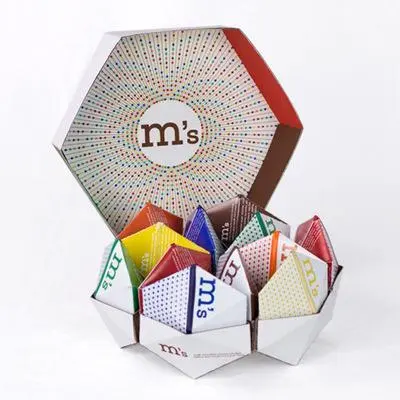
- Typ přenosného boxu: Kufr má dobrou nosnost, přenosnou horní část a snadno se skládá a rozkládá. Je to nejčastěji používaný typ krabice v dárkových krabicích. Jeho největší předností je, že se snadno přenáší. Měli byste však věnovat pozornost tomu, zda objem, hmotnost, materiál a konstrukce rukojeti výrobku odpovídají, aby nedošlo k jeho poškození během používání.
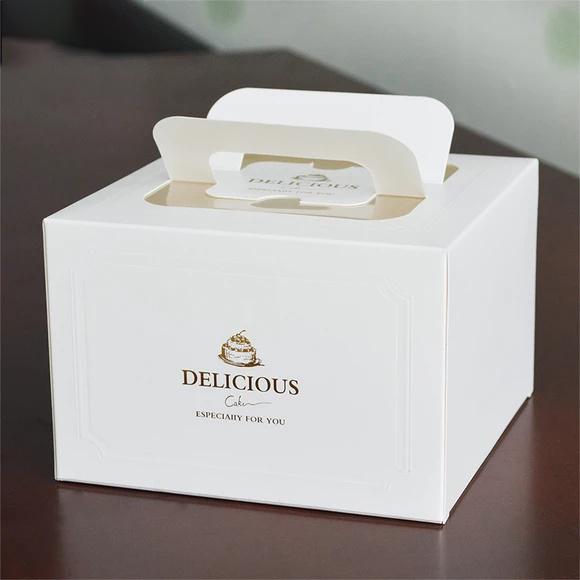
- Typ závěsného boxu: Závěsné obaly mohou umožnit, aby se baterie, psací potřeby, zubní kartáčky, sluchátka a další drobné zboží objevily v supermarketu v nejlepší poloze a úhlu, což je vhodné pro vystavení v regálech.

- Typ displeje: V dnešní oslnivé nabídce výrobků často jako první upoutají pozornost výrobky ve výkladní skříni. Obaly do výkladních skříní hrají velmi důležitou roli při prodeji zboží, zejména svou úlohou při přilákání spotřebitelů, zvyšování přidané hodnoty výrobků, uspokojování duchovních potřeb spotřebitelů a upevňování image značky a společnosti. Lidé jej stále více uznávají. V současné době se široce používá ve slepých krabicích a figurkách.
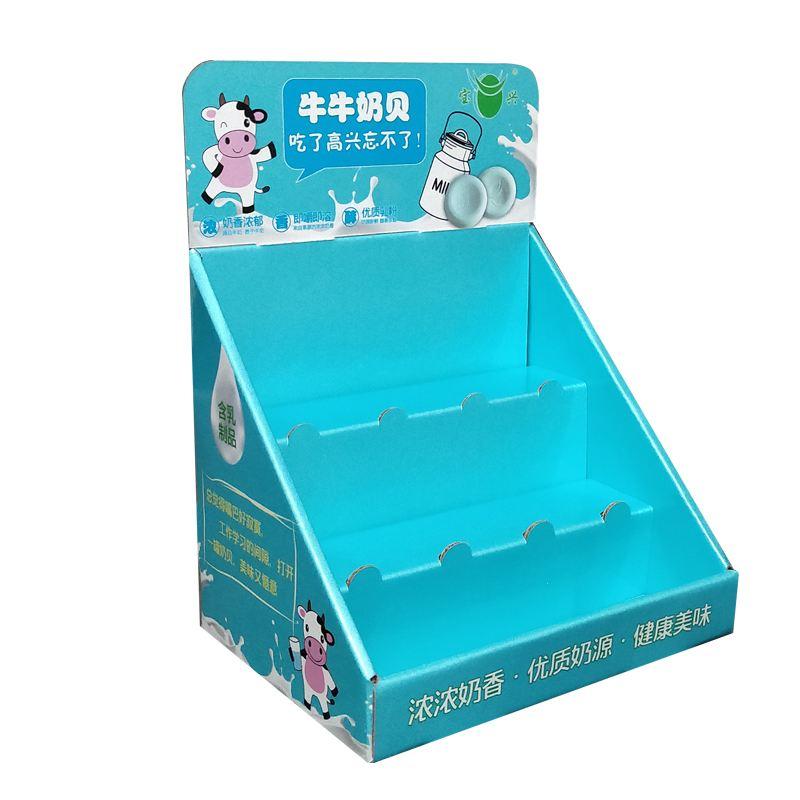
- Typ knižního boxu: Styl balení připomíná knihu a krabička se otevírá ze strany. Tvarově se krabička skládá z panelu a spodního boxu. Materiály se vybírají podle přizpůsobené velikosti a funkce obalové krabice. Některé typy krabic se dělí na krabice s jednoduchým odklápěcím víkem a s dvojitým odklápěcím víkem. Krabice s dvojitým odklápěcím víkem se skládají ze spodní krabice a dvou vík. Požadavky na dvojitou odklápěcí obalovou krabici Proces je poměrně složitý. Sladění magnetů, železných plechů a dalších materiálů podle potřeb je jednou z možností krabice pro špičkové dárky.
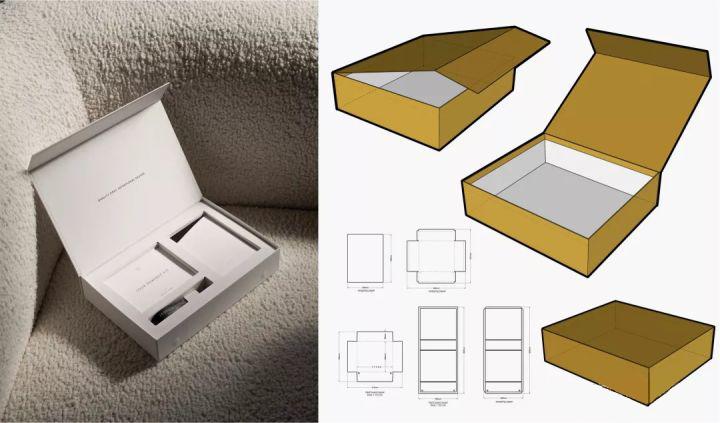
- Dvoudveřový typ boxu: Dvoudveřový typ skříně se skládá z levé vnější skříně a pravé vnější skříně. Uvnitř je vnitřní schránka a levá a pravá vnější schránka jsou symetrické. Má neotřelý styl, snadno se používá, má krásný vzhled, snadno se vyrábí, má nízké náklady a snadno se propaguje; lze do něj pohodlně a rychle umístit různé Obalové boxy různých specifikací a vkusu.
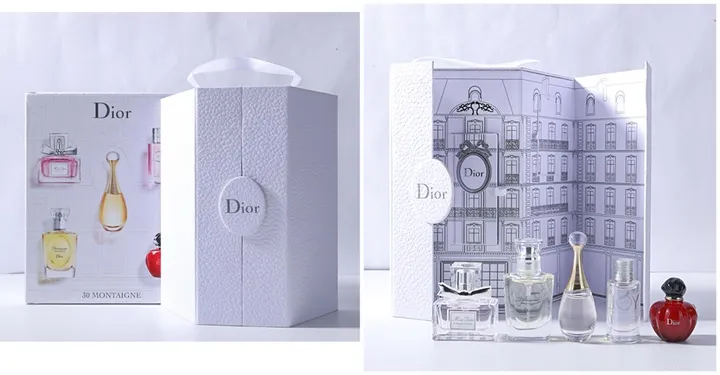
- Typ skládacího boxu: Skládací kartony zaujímají díky své neotřelé struktuře a nádherným dekoracím významné místo v mnoha oborech. Mezi ohyby krabicového tvaru ponechte určitou vzdálenost. Při použití ji lze podepřít do trojrozměrného tvaru a lze ji volně skládat. Může nejen plnit určitou ochrannou funkci, ale také do jisté míry přinášet vyšší přidanou hodnotu zboží. Proto jsou skládací kartony stále oblíbenější.
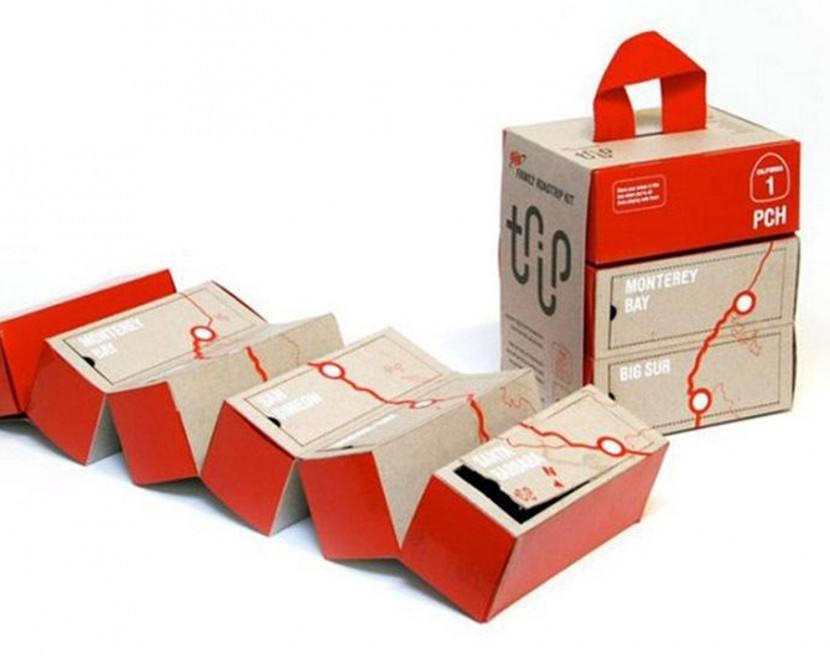
- Typ otočného boxu: Obalová krabice s otočným oknem má vynikající konstrukční design, který může zkrášlit a propagovat výrobek, odrážet hodnotu výrobku a zlepšit konkurenceschopnost podobných výrobků na trhu. Rotační box zatěžuje a vystavuje výrobky bez potřeby dalších materiálů během vystavování. Velmi dobře chrání výrobky během balení a snadno se zvedá a umisťuje. Zvyšuje pohodlí při používání, snižuje náklady a je velmi praktický.
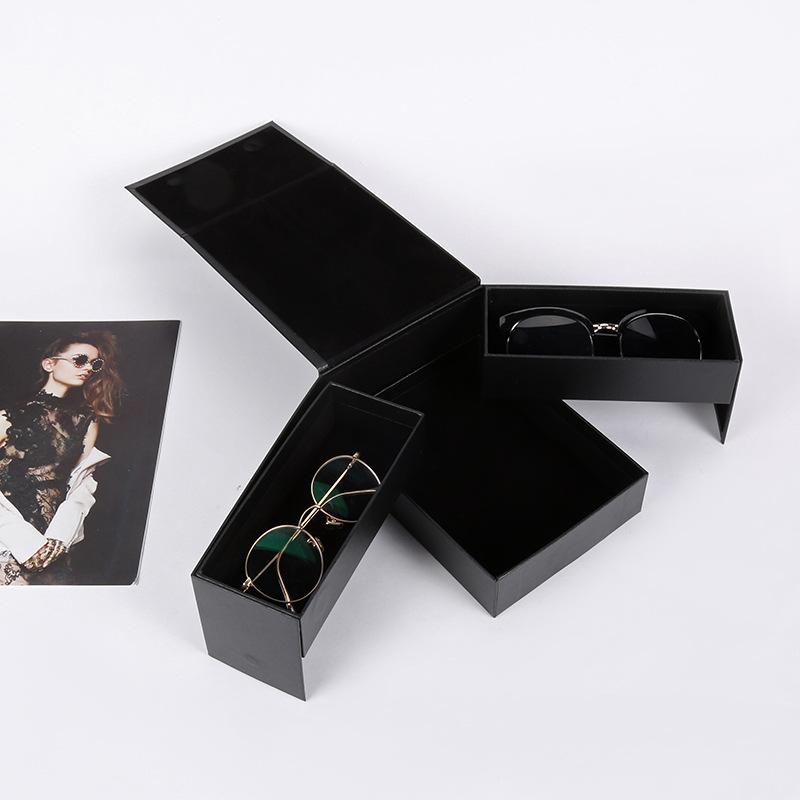
Tyto typy obalových krabic nabízejí designérům rozmanité možnosti, jak vytvořit přesvědčivá a funkční obalová řešení.

